Naples’s history starts from the 9th century BC with the name Paleopolis or Parthenope. The name Naples or Neapoli originated in the 5th BC and means New City in Greek. Naples was a very important city of the Magna Graecia and had an important role in the Mediterranean since that time. Discovering what to do in Naples offers a journey through time, from ancient ruins to modern marvels.
It is widely known that North and South Italy are different. North Italy is by far richer and this is something that you are going to realize almost immediately. This of course is not always a bad thing. The Italian cuisine is almost always spectacular regardless of the price. Either you are in Rome or Naples!
Today, Naples ranks as Italy’s third-largest city, famed as the birthplace of Pizza. It worships Maradona like a deity. The city boasts mysterious catacombs and rich historical sites, including Pompeii and Herculaneum.

Our trip to Naples was not restricted only to the city. We wanted to discover more. To do so, we decided to organize our trip the same way we did in Barcelona. By arranging accommodation near Naples (Torre del Greco) and renting a car.
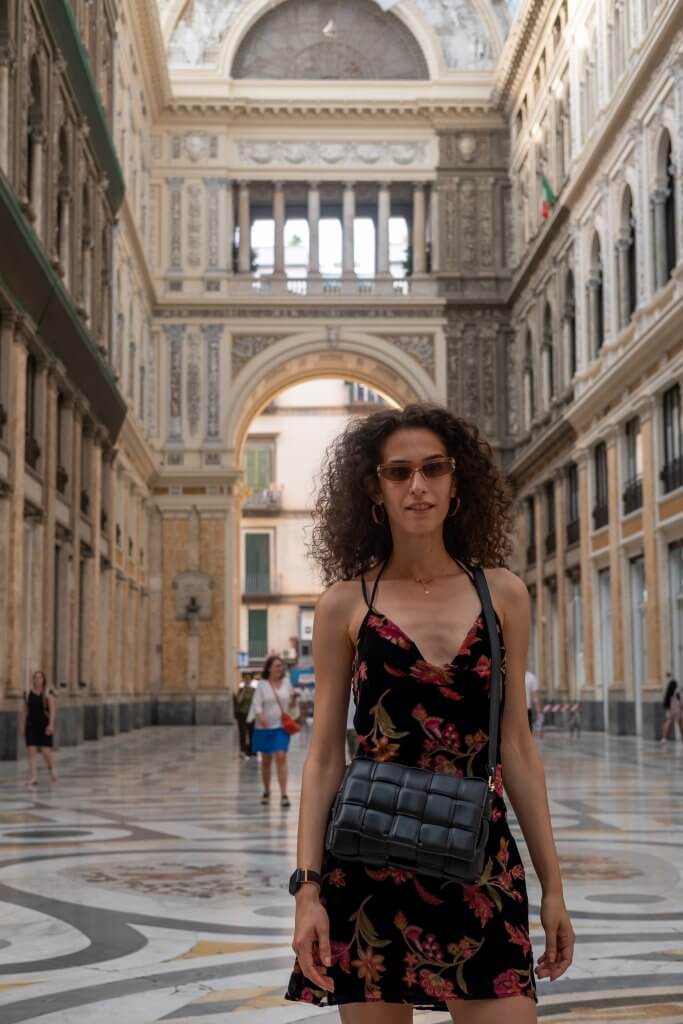

1. Exploring Naples on Foot – Discover the City’s Hidden Gems
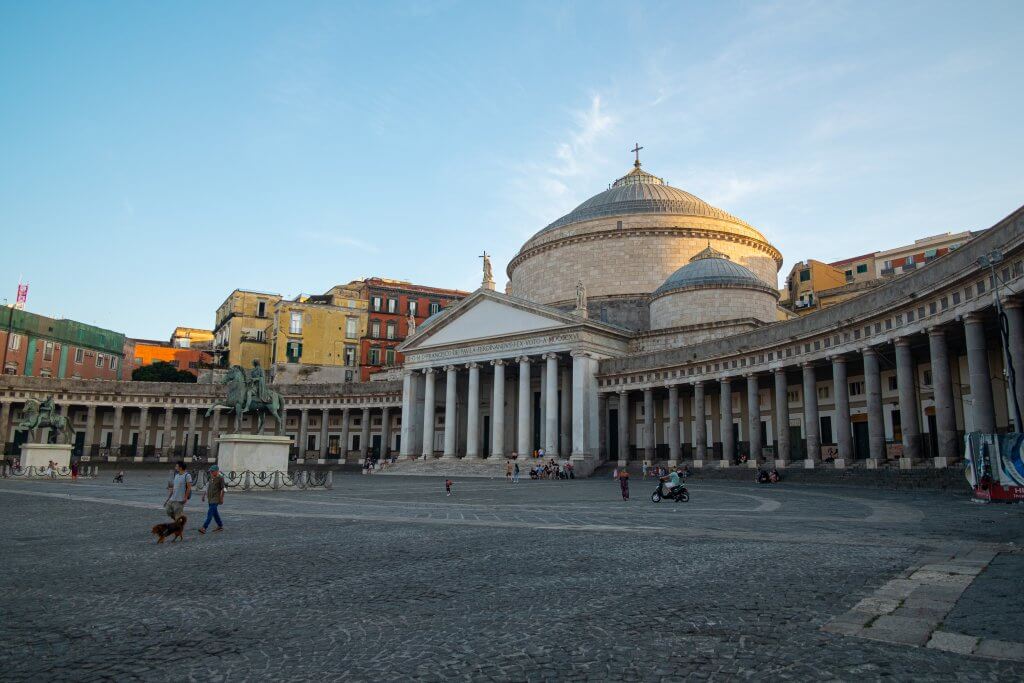
The Historical Center of Naples has been a UNESCO Heritage Site since 1995. Its long history, architecture, Roman-Greco town plan, and 16th-century ‘Spanish quarters’ layout highlight its uniqueness. When you will get used to the thousands of Vespas 🛵 (every third citizen owns one) around the city then you will start enjoying it.
Of course, if you join a guided tour it will be easier to orient and you will not miss anything from Naples.
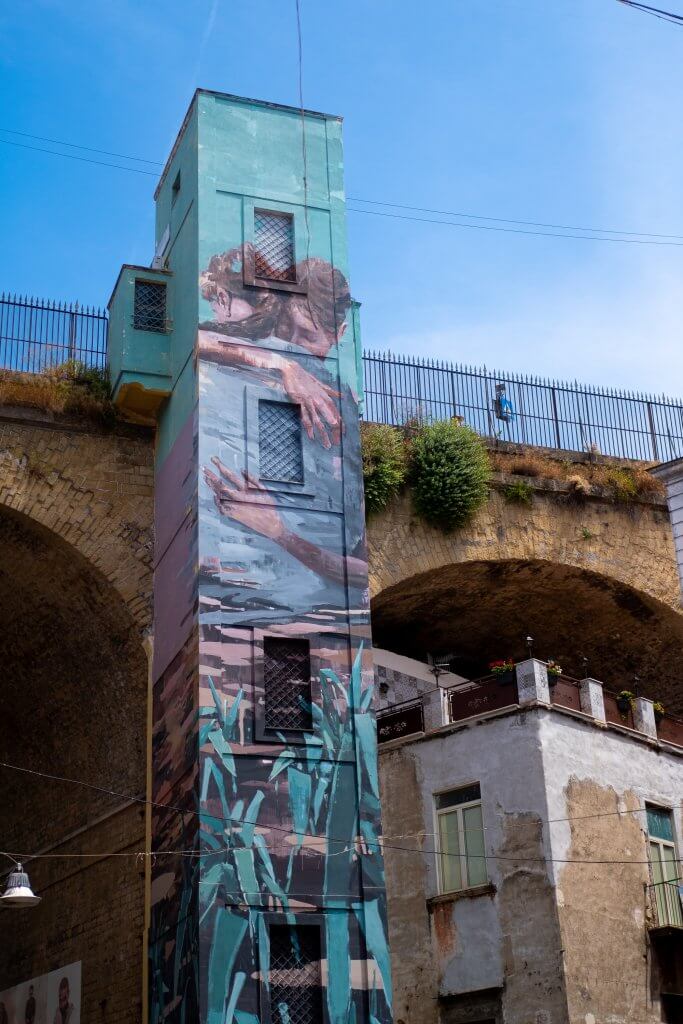
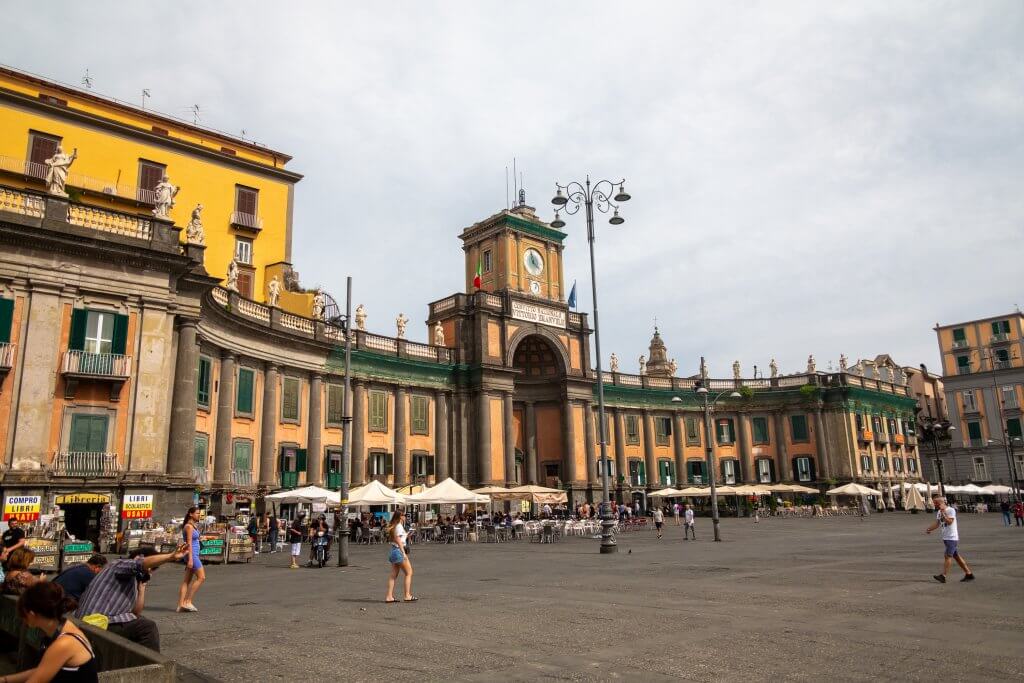
2. Pompeii Ruins – A Must-See Historical Site Near Naples

Discovering the Ancient City of Pompeii
Exploring what to do in Naples isn’t complete without visiting Pompeii, where history is vividly preserved. This ancient city, engulfed by Mount Vesuvius in 79 AD, was a bustling commercial center with about 20,000 residents. Its status as a major port made Pompeii a vibrant sailors’ quarter, brimming with bars, baths, brothels, restaurants, and entertainment venues, offering a unique glimpse into Roman daily life.
Since it was a port, an important one at the time, it was kind of a sailors’ quarter. That means that was fun as well! During our visit, our guide pointed us to lots of bars, baths, brothels, restaurants, and places of entertainment. The remains of homes that you will visit give a glimpse into Roman lifestyles.
A Personal Journey Through Pompeii
Our visit to Pompeii brought history to life, especially through the poignant sights of the cast bodies. Archaeologists uncovered these forms by filling voids left by decomposed bodies with liquid plaster, revealing their final moments. The experience, both fascinating and somber, underscores the importance of exploring Pompeii with a knowledgeable guide.

We were fortunate to have Diego from Askos Tours, who enriched our understanding of this ancient city. Don’t miss the chance to walk through history—ensure you visit Pompeii with a tour guide. Find a link to the tour here and ask for Diego!

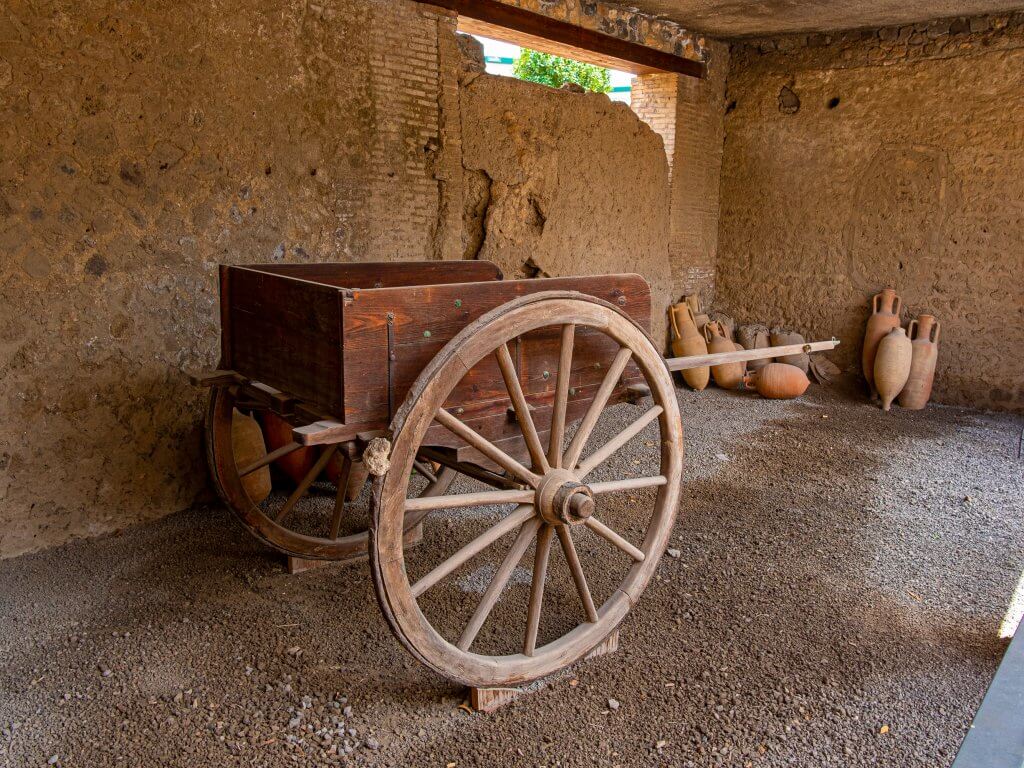

3. Highlights of the Naples Archaeological Museum – Ancient Artifacts and More
Pompei was excavated in the 17th century and the local king back then demanded to bring him the best of whatever they were going to find. For this reason, the finest art and artifacts of Pompeii ended up in Naples and later on in the National Museum of Archaeology.
In the National Museum of Archaeology, you will find some of the best Roman and Greek sculptures in existence. The collection ranges from grand statuary to amazing mosaics that give a sense of the sophistication and wealth of Pompeii’s city and its people.
If you want to get a glimpse of Pompeii’s residents’ personal life and their perception of erotism visit the “Il Gabinetto Segreto” which means the secret Cabinet.
This room was a separate exhibition for several years due to the censorship of the articles’ erotic topics. Today is free to visit!! 😉 A visit to the Archaeological Museum is a highlight for anyone figuring out what to do in Naples, showcasing treasures that tell tales of ancient opulence and artistic mastery.
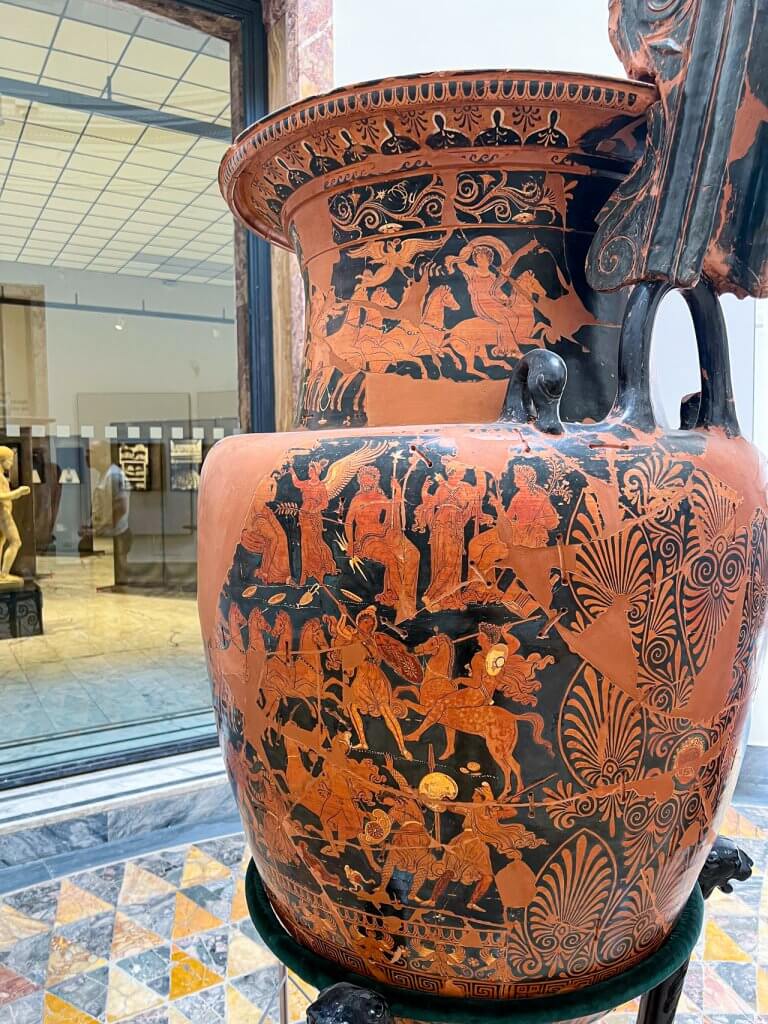
4. Exploring the Mysteries of Naples Catacombs – A Unique Underground Experience
Delving into the catacombs is an intriguing answer to the question of what to do in Naples, revealing a hidden world beneath the bustling streets. There are two main catacombs in Naples. The San Gaudioso and di San Gennaro. The ticket that you will purchase for any of those two sightseeing is valid for the other catacomb site as well.
On both occasions, the tickets include guided tours which are very explanatory. We recommend organizing your tour a couple of days before as the tours are taking place in groups every hour with a restricted number of visitors.
Book your San Gaudioso tickets here / Book your San Gennaro tickets here
Remember. One ticket is valid for both Catacombs. We advise you to prebook a ticket for San Gennaro. The San Gaudioso catacombs are closer to the city center so in case you have to wait for an hour to enter with the next available group, you will not waste your time just waiting in the queue line.
San Gaudioso catacombs

The catacombs of San Gaudioso were those that excited us the most.
They are located under the Basilica San Vincenzo Della Sanita. It was built in 1602 and it was based on the designs of Giuseppe Nuvolo, an early Baroque-style architect. The basilica was originally part of a Dominican monastery founded in 1577.
What makes the catacombs of San Gaudioso unique is the gallery. You will see skulls heads attached to the walls and frescos of some important people of the time decorating the main corridor.
It can be creepy, yes but the scope was to remind one thing. Whoever you are (a princess or common person., a judge or a criminal) there is one thing that you cannot avoid and we are all equal against it. The death.

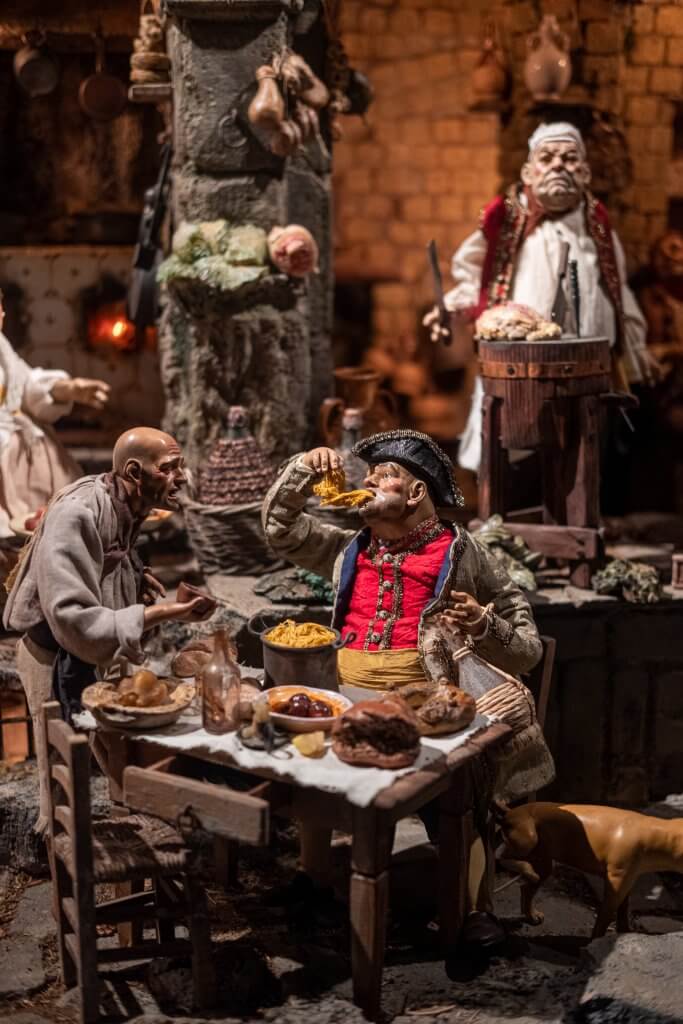
Catacombs di San Gennaro
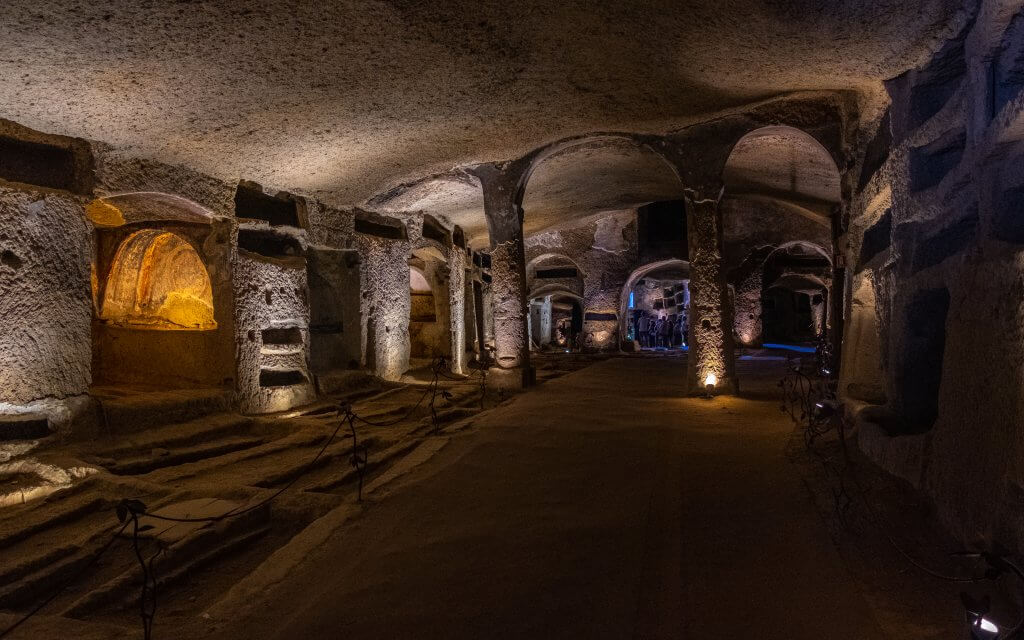
You can easily locate the Catacombs of San Genaro from the Basilica Madre del Buon Consiglio. A church that was constructed between 1920 and 1940 in a model of St. Peter’s in Rome.
From the courtyard of this church is the entrance to the ancient catacomb site, part of the biggest catacomb Symplex in South Italy. The fresco with San Genaro with Mount Vesuvius on one side is one of the most beautiful achievements of early Christian painting.
The Catacombs di San Gennaro has a uniquely impressive atmosphere with plays of light and shade created where the light floods in through natural skylights or man-made openings and passageways.

5. Day Trip to Capri Island from Naples – A Guide to Paradise

If you’re pondering what to do in Naples for an unforgettable day trip, the enchanting island of Capri awaits just a short boat ride away. Capri is a beautiful island just 1hr away from Naples with a fast boat. We booked a full-day guided tour for 120€ per person something that we strongly recommend NOT to do.
The tour included the ferry ticket, the guide, and one lunch on the island. In short, the ferry ticket costs around 26 euros both ways, the tour guides paid more attention to promoting the local shops and shopping in general and the lunch was really bad. Something hard to achieve in Italy!
We concluded everything that we got to know in this article, from Homer’s references to today’s production of the big lemons and the limoncello to Augustus’ gardens with the breathtaking view!
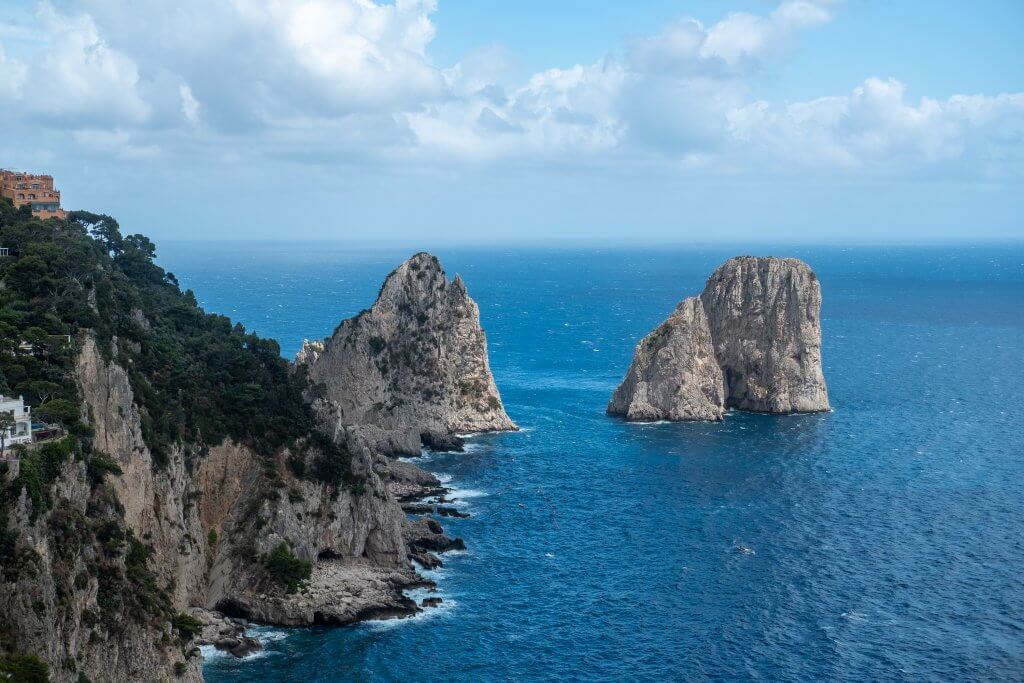
6. The Hidden Beach of Fiore di Furore – A Scenic Getaway on the Amalfi Coast
The Fiore di Furore is one of the most known beaches-highlights of the Amalfi coast and not without a reason! The clean waters, the steep cliffs from which dozens of visitors diving from, and the picturesque arched bridge compose a magical landscape.
The reason it isn’t so crowded probably stems from the difficulty of reaching it.
There are different ways to approach this wonderful beach either by car, motorbike, or by foot and you will find all those in a separate post that we prepared! Actually in the end you have to walk a little bit anyway. How to reach Fiore di Furore

7. Discovering the Amalfi Coast – Breathtaking Views and Things to Do Near Naples
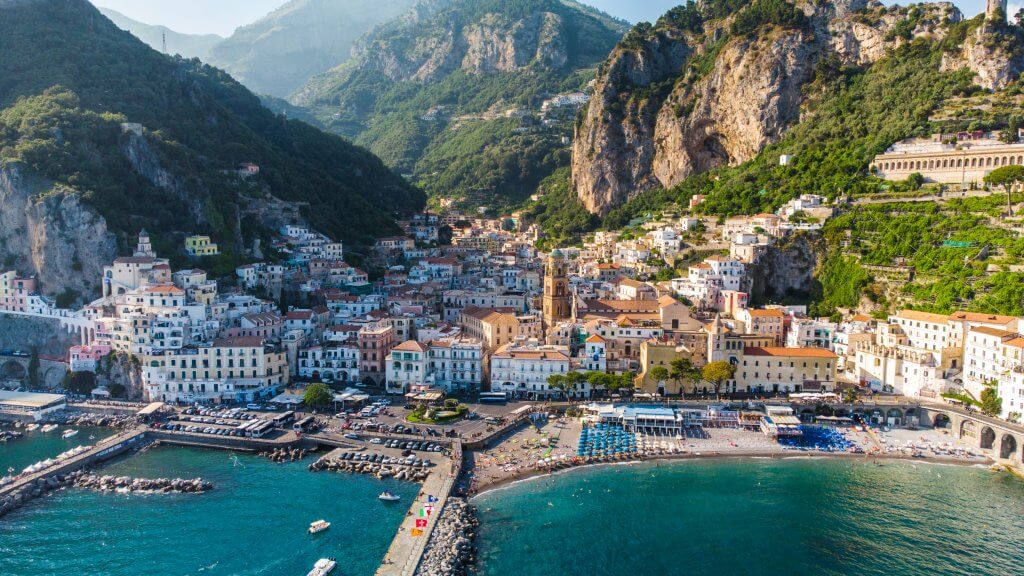
Hence it has been one of the most popular destinations since the 18th century, especially for wealthy Europeans. Today the Amalfi Coast is an international jet-set destination with luxury hotels and famous visitors from all over the globe.
Amalfi Coast has been listed as a UNESCO World Heritage Site since 1997 for its landscape and long history.
You will enjoy the narrow instagrammable streets with the many small shops, and the liquor limoncello and you will fall in love with the lemon sorbet ice cream served in local huge lemons!

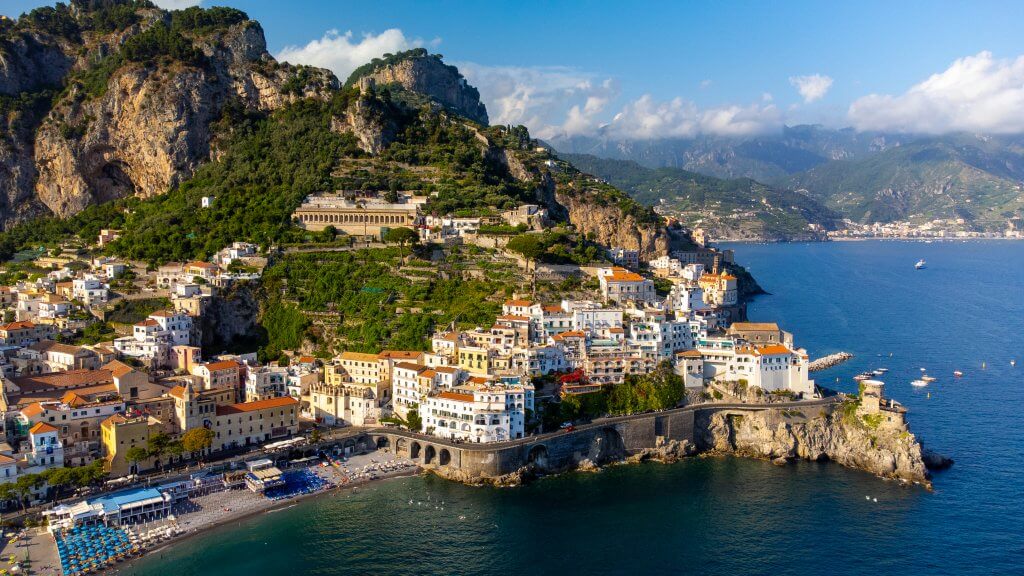
8. Positano’s Charm – A Colorful Escape on the Amalfi Coast Near Naples
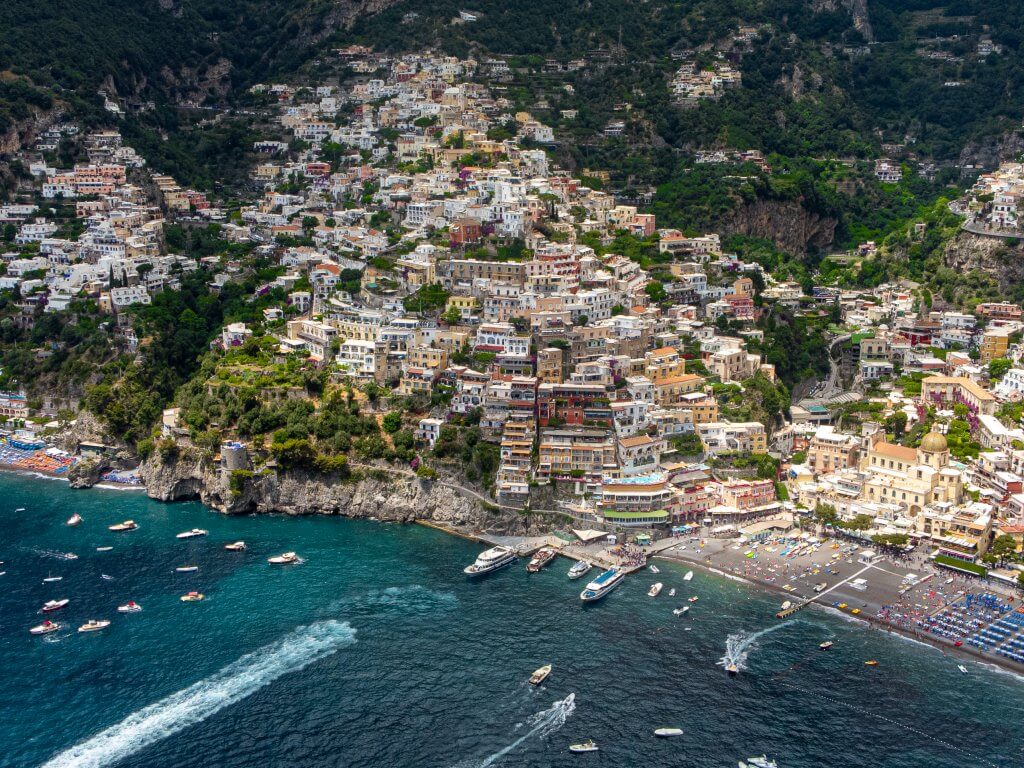
In the last few years, Positano is a huge trend worldwide. Its narrow streets, colorful flowers, and houses in combination with the Mediterranean’s blue make every corner a perfect spot for a love story! ❤️
Positano is part of Costiera Amalfitana which as we mentioned above is a UNESCO World Heritage Site.
A lot of people compare Positano with Santorini but we will have to disagree. Positano is all about the way that the colorful houses are built on the hill in combination with the Mediterranean blue. Santorini and its caldera is about the cliff itself and the amazing natural, imposing view of the Volcano. In other words, in Santorini, you will admire the view from the cliff, the most beautiful balcony in the world, while in Positano you will admire the cliff itself from the point of view of a drone or a boat.
For this exact reason you have to make, a short at least, ride with a boat to admire Positano’s scenery! Make your research from home and book your ride via GetYourGuide. The boat tours are really popular so looking for a tour at the last moment is not a wise idea.


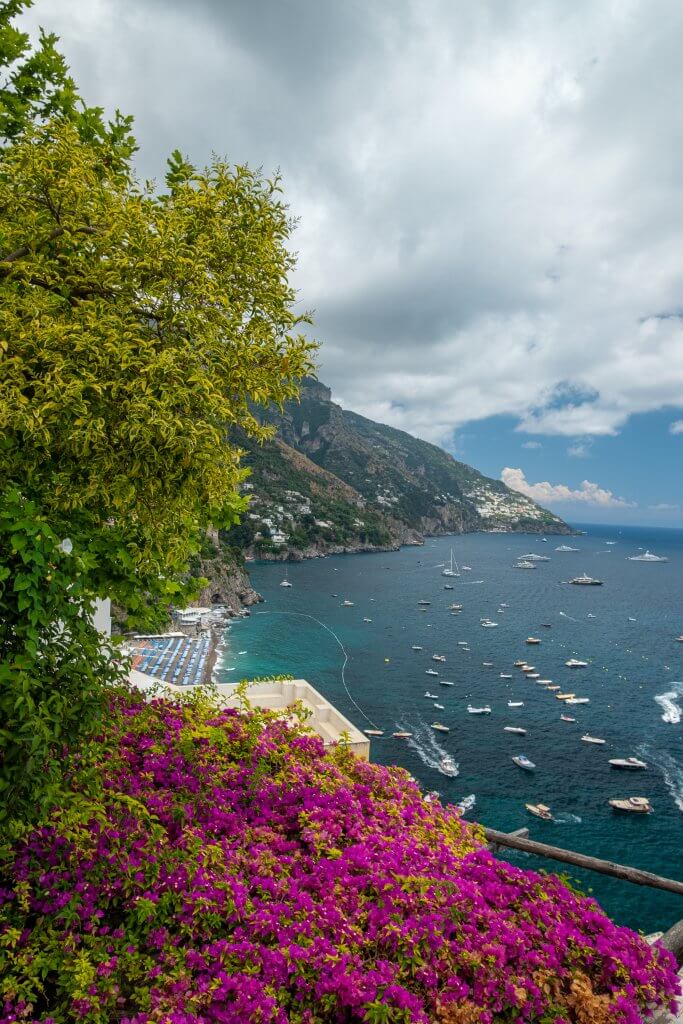
9. Visiting the Archaeological Park of Herculaneum – Preserved History Just Steps from Naples
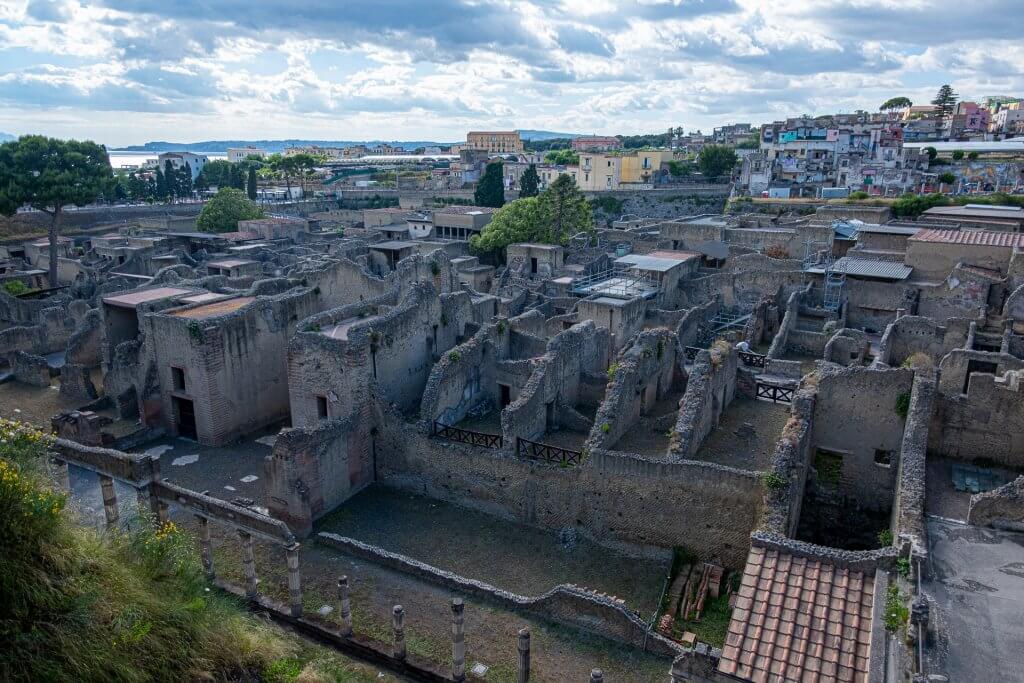
Herculaneum is much smaller than Pompeii but almost intact. Many claim that it is better than Pompeii for several reasons. One of those is the incredible frescos that are still on the site itself and not in a Museum. Moreover, you can wander more freely to the rooms and condors compared to Pompeii and visit more houses.
It is a fact that the residents of Herculaneum were wealthier as a result their houses were bigger with fancy mosaics. It is incredible that on some occasions even the carbonized wood has survived!
10. Climbing Mount Vesuvius – An Adventurous Addition to Your Naples Itinerary
Our list wouldn’t be complete if visiting the imposing Mount Vesuvius was missing. Vesuvius volcano is assumed as the most dangerous volcano in the world due to the almost 3 million residents living nearby. It is just a couple of hours from Naples and if you have a car is easy to approach even by yourself.
Hiking to Vesuvius Mountain is short, around 20 minutes, but it is steep. A good piece of advice is to have with you some trekking or at least sports shoes. Avoid for sure open-toe shoes.
It wouldn’t be a bad idea to combine Pompeii and Vesuvius visits. At the end of the day, this Volcano is the cause of Pompeii’s and Herculaneum’s disaster.
From its ancient ruins to breathtaking coastal views, Naples offers so many options that guarantee to captivate the heart and imagination of every visitor.






Leave a reply